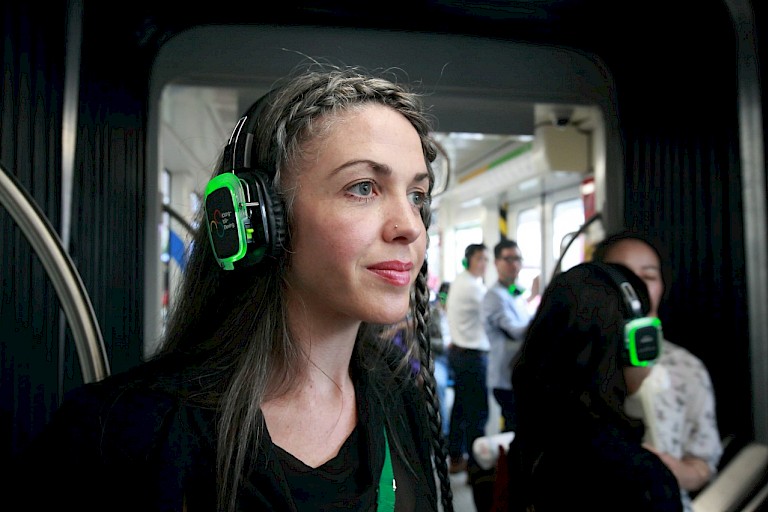



The work uses GPS technology to follow the tram. As the car moves along the rails, the sound and descriptive content change with the scenery. Passengers wear headphones and look at the view outside the car as if they the life of the city beyond the windows. At the same time, the passenger’s eyes become lens that actively seek out the stories they are hearing, creating a real, detailed, moving film of the city.The work uses GPS technology to follow the tram. As the car moves along the rails, the sound and descriptive content change with the scenery. Passengers wear headphones and look at the view outside the car as if they the life of the city beyond the windows. At the same time, the passenger’s eyes become lens that actively seek out the stories they are hearing, creating a real, detailed, moving film of the city.
The Guangzhou Tram was designed both as a sightseeing platform and a public transit route. A controversy arose due to the limited coverage of the route, as many residents believed that the functionality of the tram was a poor return for the funds invested. Starting in 2015, the Times Museum worked together with the Guangzhou Tram Co. Ltd. to curate a series of “Art on Rails” projects that showcase contemporary art in a mobile venue. In March 2015, the Times Museum invited artists and curators to use the daily life of the city as a text and source of inspiration. Working with the physical space of the tramcars, artists were invited to make site-specific works. Interactive and multi-faceted contemporary artworks have not only attracted more passengers but also contributed to the modernization of the city.
There are many examples of art projects instigated by art institutions. Urban spaces often become large exhibition platforms outside the walls of a museum, greatly expanding the museum’s public exposure. If art museums merely book artworks in urban spaces and do not respond to the particularities of the location and audience, then they have given up on the opportunities and challenges of the public space. Art museums now are not merely intellectual institutions, but a platform for accumulating social problems, reflecting on them, and responding to them with visual languages. The expansion of exhibition spaces to the streets is not ultimately to draw more audience members to the museum, but to break down the limits of the physical space and expand the functionality and social responsibility of the institution.
“Sitting Still Moving” was designed with two versions, one for daytime and one for night. In the nighttime version, the tramcar becomes a dark space where the audience can focus on what they’re hearing and search the city for traces of the stories. The Times Museum hopes to use this project as a public platform and invite audience members to share and create the city with them.
All copyright belongs to Shanghai Academy of Fine Arts, Shanghai University.

